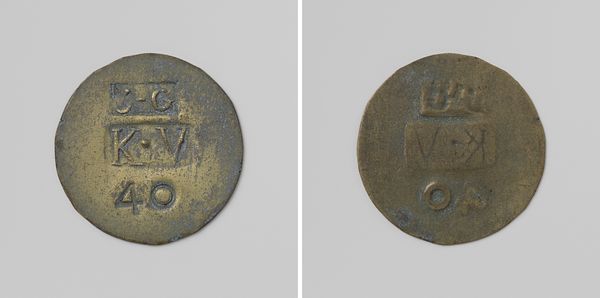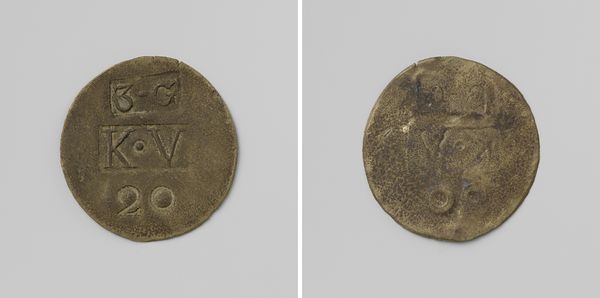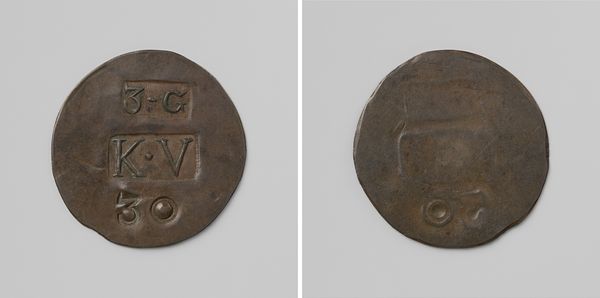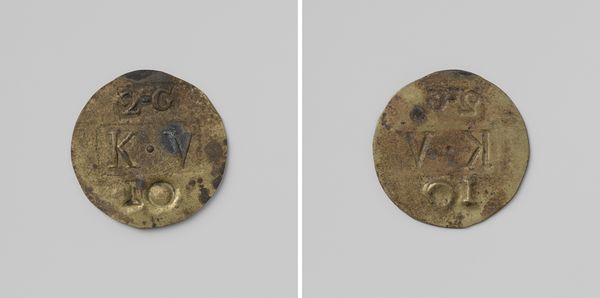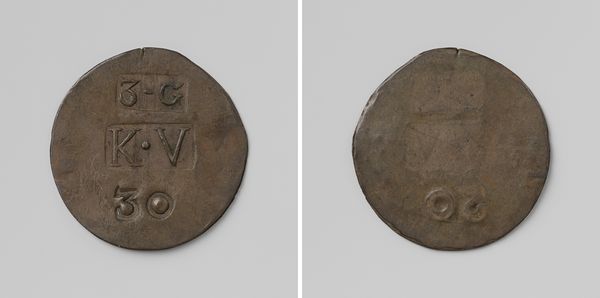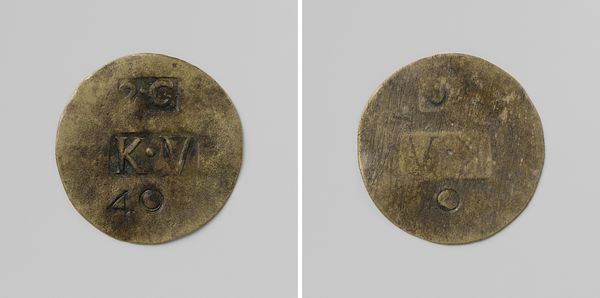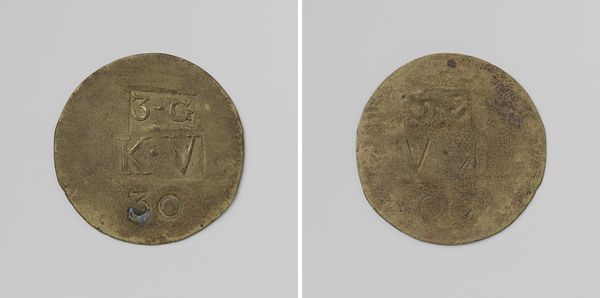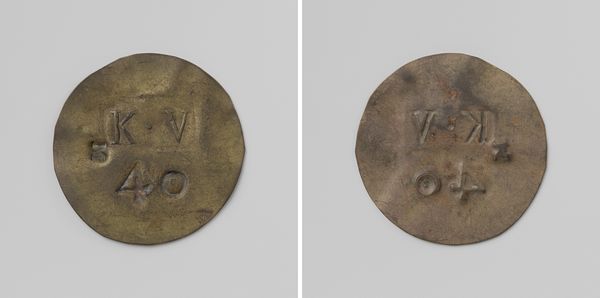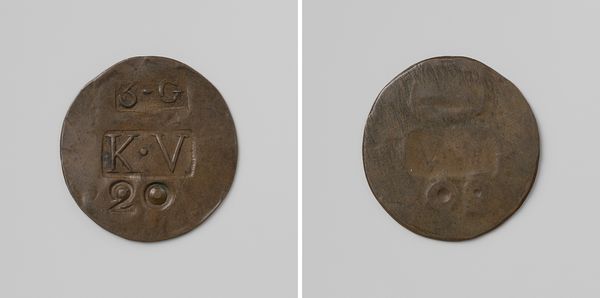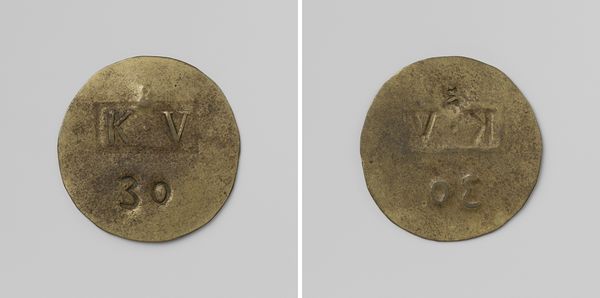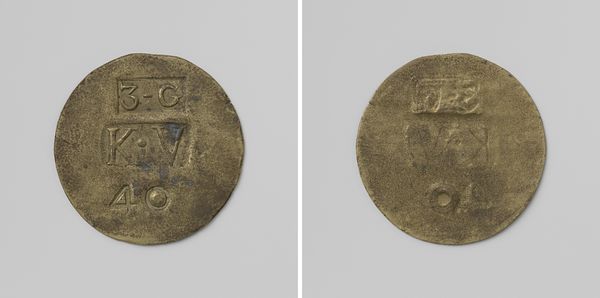
Tweede gesticht van de kolonie Veenhuizen, huismunt geslagen op last van de Maatschappij van Weldadigheid ter waarde van dertig cent 1818 - 1859
0:00
0:00
anonymous
Rijksmuseum
metal, relief, engraving
#
dutch-golden-age
#
metal
#
relief
#
coin
#
engraving
Dimensions: diameter 3.3 cm, weight 2.87 gr
Copyright: Rijks Museum: Open Domain
This coin, with a value of thirty cents, was struck on the order of the Maatschappij van Weldadigheid, likely in the 19th century. It was made for use in the Veenhuizen colony, a settlement intended to rehabilitate the poor. The material is base metal, probably brass or bronze, and the technique is stamping: each coin would have been struck in a die. Coins like this offer a fascinating perspective. Because this example was never intended for a wide market, its value lies not in inherent material worth, but in its social significance. It speaks volumes about the era's attitudes toward poverty, labor, and social control. The act of creating custom currency for the colony underscores the complex interplay between philanthropy and power, and the belief that even the most marginalized could be reformed through structured work and economic exchange. As this humble coin demonstrates, understanding an object’s meaning is never just about aesthetics; it’s about situating it within the messy realities of production, labor, and social context.
Comments
No comments
Be the first to comment and join the conversation on the ultimate creative platform.
